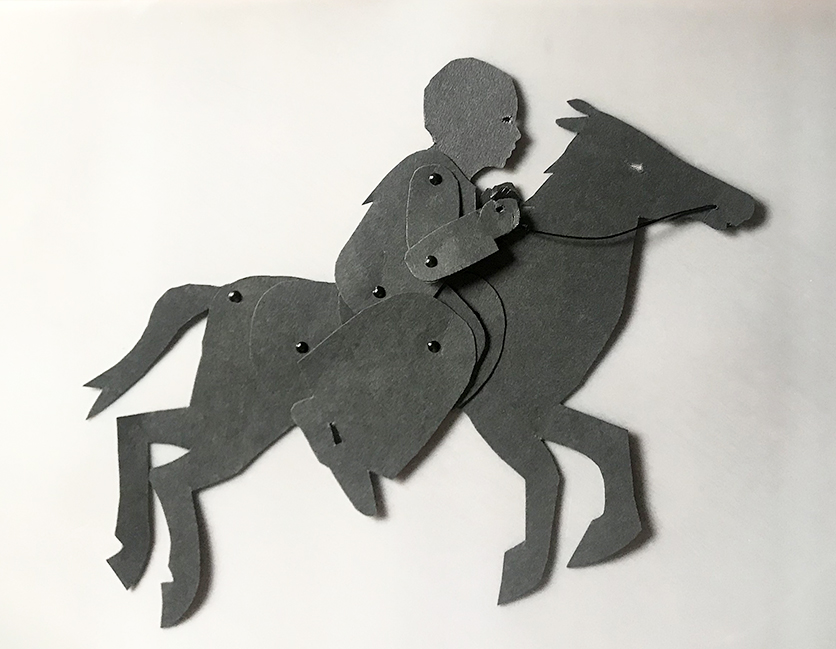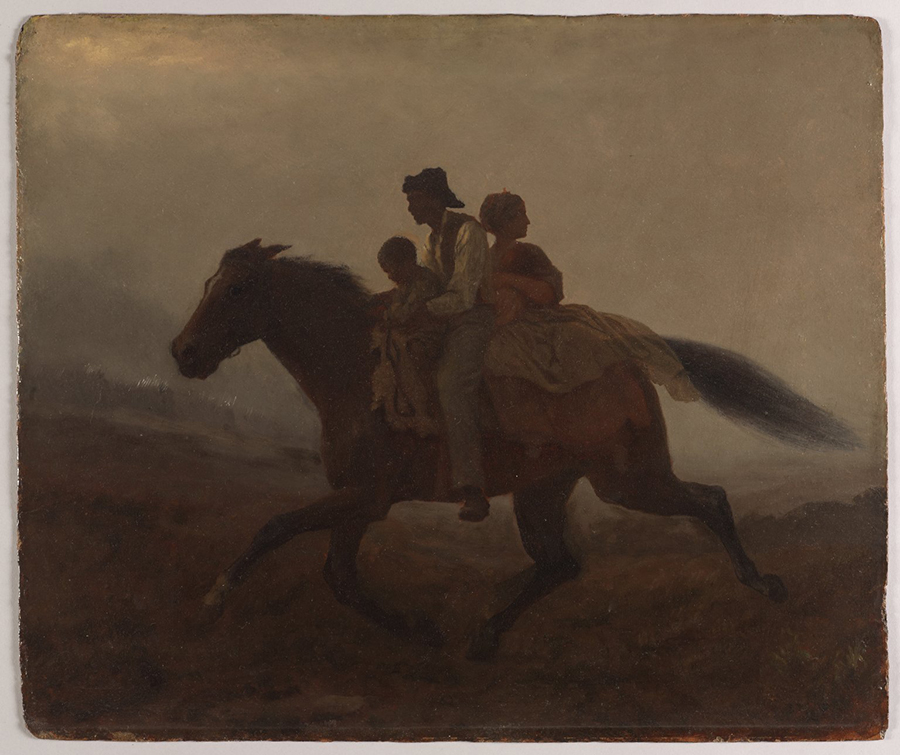
Shadow puppetry offers opportunities to act out stories from the Underground Railroad, the network of free Blacks, Quakers, and abolitionists who helped men, women, and children escape slavery in the decades prior to the Civil War. Many of these stories were recorded by William Still in his book The Underground Railroad (1872), in which he details escapes by various means of transportation. In previous blog posts I have shared patterns and tools to act out the stories of Henry “Box” Brown as well as Harriet Tubman’s escape by foot, row boat, and horse and wagon. In this post I am sharing a pattern for a galloping horse, to be found in the Transportation section of the Printable Library.
- The story of Henry “Box” Brown
- Harriet Tubman and the Underground Railroad with shadow puppets
- Making other characters: Step-by-step guide to making a shadow puppet from templates

One of the most famous images associated with self-liberation from enslavement is the painting A Ride for Liberty, painted by the genre painter Eastman Johnson in 1862, after witnesses the escape of a Black family on horseback during the Civil War. The horse, which is carrying two parents and two children, is substantially bigger in proportion than the pattern for the galloping horse puppet. If you want to use a more realistic size, particularly if you want to use it to transport more than one person, feel free to enlarge the pattern on a photocopier or printer to 110% or bigger.
Instructional video about how to make a puppet ride a horse
In the video above I am showing how to attach and move the moving rods to make the horse gallop. The puppet of Harriet Tubman is attached to the horse with the same connecting brad that attaches her upper and lower legs at the knee (alternatively, you can use velcro). For smooth handling her body is also secured to the horse’s back and stomach with black painters tape, which is removable. For the horse’s reigns I used black metal wire, attached through a hole in the horse’s nose and taped with black painters tape to the insides of Tubman’s hands. Although the metal helps to keep the rider’s hands in place, you can also use thread or elastic.

